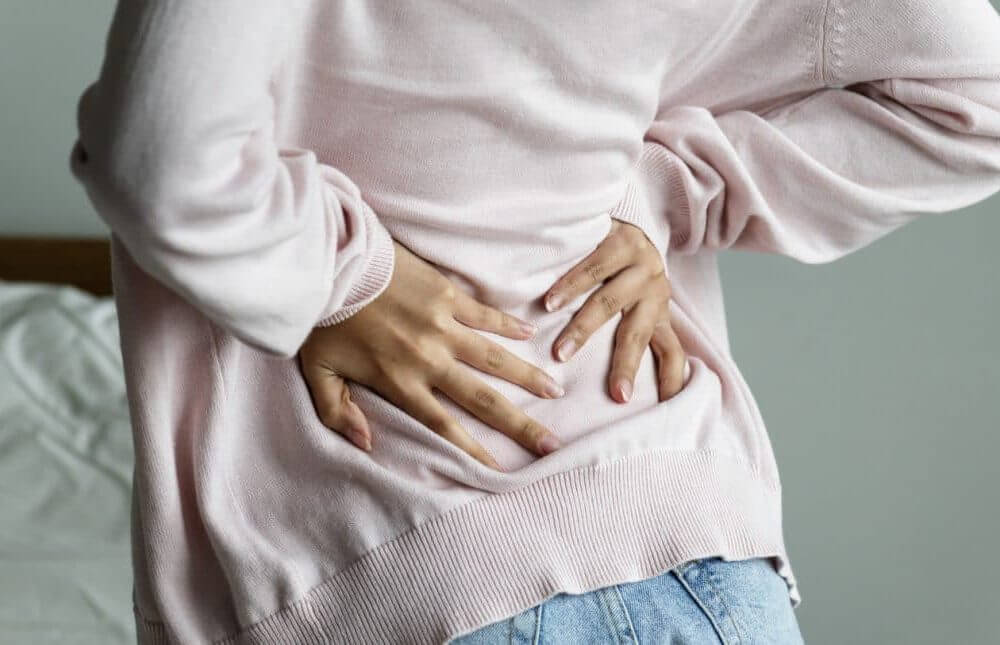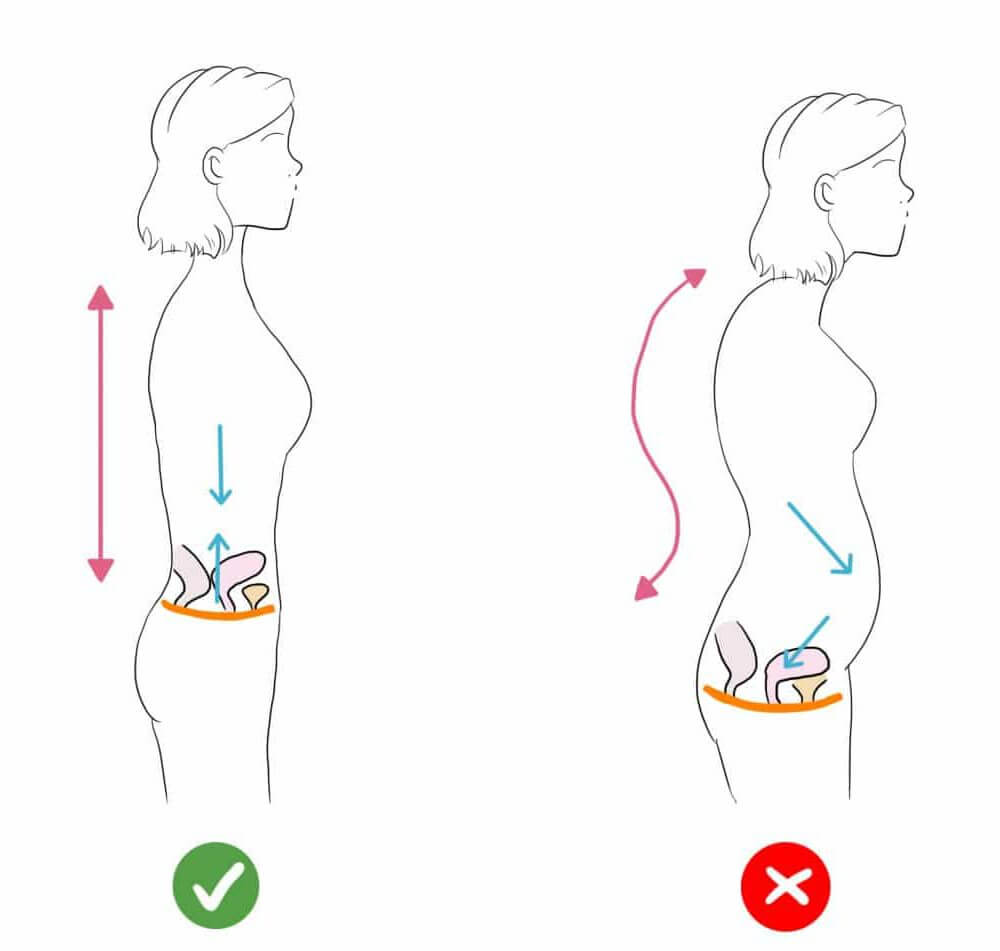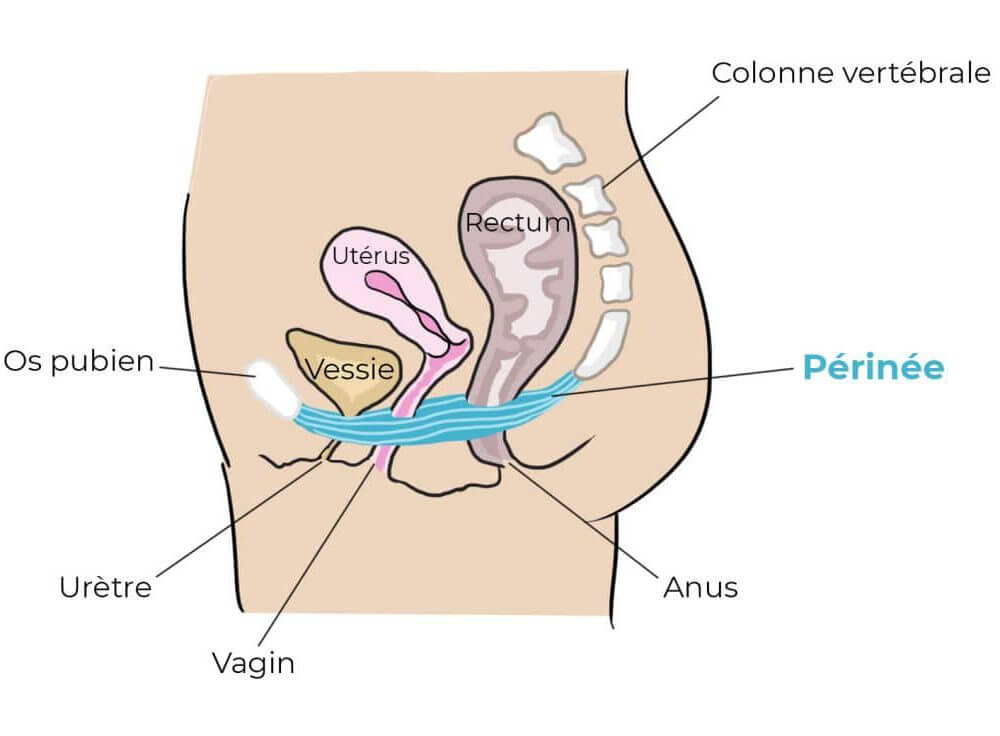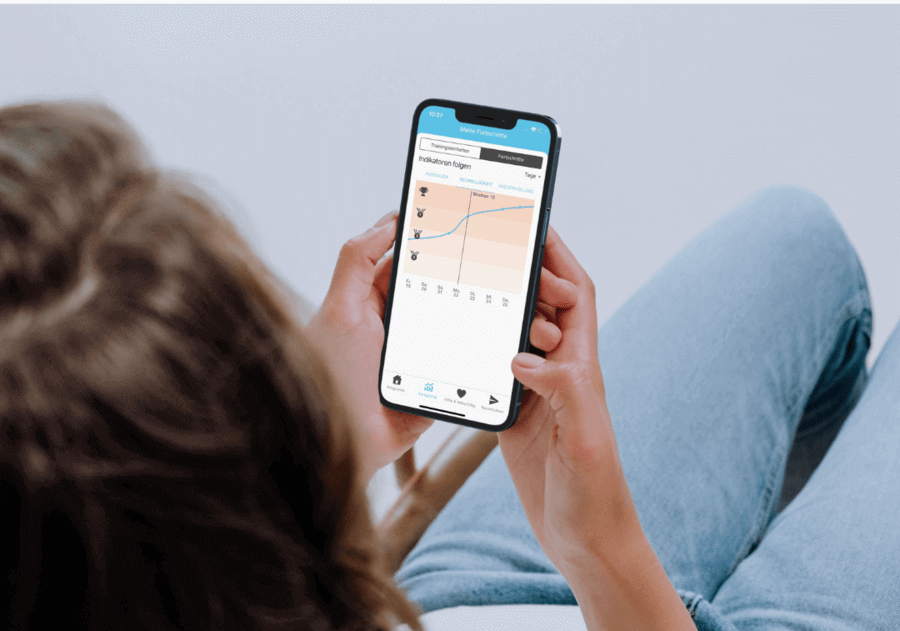
Quel lien entre prolapsus et les douleurs lombaires ?
Le périnée est à l’origine de diverses problématiques de santé comme de la descente d’organe. Aussi appelée prolapsus, les douleurs lombaires peuvent être l’un des signes annonciateurs de cette pathologie.
Lien entre douleurs lombaires et périnée
Le Dr Marine Lallemant, gynécologue spécialisée en pelvi-périnéologie nous donne des pistes pour mieux comprendre le lien entre le prolapsus et les douleurs lombaires.
Les douleurs lombaires
Selon l’Assurance Maladie, 4 français sur 5 souffriront de lombalgie au cours de leur vie et sur les douze derniers mois, plus de la moitié de la population français a eu un épisode de mal de dos.
La lombalgie, qui signifie littéralement “mal au bas du dos”, peut être courte dans le temps ou durer longtemps et peut avoir de nombreuses origines. Dans tous les cas, la douleur a une influence sur notre posture et sur notre façon de bouger.

En effet, notre dos est soumis à des contraintes tant le jour par les activités de la vie quotidienne que la nuit par la position allongée maintenue plusieurs heures.
Alors attention, votre lombalgie peut être due à des facteurs aussi divers que variés. Et il se peut que votre périnée en soit l’une des causes. Alors si vous avez le moindre doute, n’hésitez pas à en parler à votre médecin ou à un professionnel de santé.
Posture, maux de dos et périnée
Le périnée se situe dans le bassin et entoure le rectum, le vagin et le vessie. Il s’étend du pubis en avant au coccyx en arrière, et est bien plus essentiel qu’on ce qu’on pense. Comme le montre bien le schéma suivant, selon notre posture, les forces qui s’appliquent sur le périnée ne sont pas les mêmes :

Quand nous nous tenons droit, la pression exercée par la gravité et par le diaphragme est une pression verticale qui est compensée par le périnée quand il a une bonne tonicité.
En revanche, dans le deuxième cas, les forces exercées partent en avant vers la paroi abdominale qui se déforme et sont renvoyées vers le bas et l’arrière. Le périnée est beaucoup moins efficace pour compenser une force orientée vers l’arrière.
Sur le long terme, il existe une risque accru de fuites urinaires voire de prolapsus donc pour éviter les douleurs lombaires, il est primordial d’agir sur sa posture. Des exercices de prise de conscience et de redressement peuvent ainsi révéler des bénéfices indirects et protéger votre périnée.

Lombalgie et prolapsus
Le mal de dos peut donc modifier votre posture. Une mauvaise posture peut provoquer des lombalgies. Bref c’est le serpent qui se mord la queue. Que l’un soit la cause de l’autre ou l’inverse, une mauvaise posture peut avoir des conséquences sur votre périnée.

Associée à une cambrure lombaire normale, tous les muscles du plancher pelvien permettent de protéger les organes du petit bassin. En effet, ceux-ci reposent les uns sur les autres et majoritairement sur le périnée.
Mauvaise posture et prolapsus
En cas de mauvaise posture, les forces qui s’appliquent à ces organes se modifient et des complications peuvent apparaître sur le long terme. Parmi la liste des complications, on retrouve la descente d’organe.
En effet, en cas de cambrure lombaire trop importante, l’axe du vagin peut se verticaliser. Dans ce cas, le col de l’utérus se retrouve au-dessus du vagin. Il peut alors commencer à descendre lentement : cela peut mener à un prolapsus.

Par exemple on parle de cystocèle si c’est la vessie qui s’extériorise. Ou encore de rectocèle lorsque c’est le rectum qui descend.
Bien entendu, la cambrure ne sera pas l’unique responsable de l’apparition d’un prolapsus. De nombreux autres facteurs impactent la tonicité du périnée comme par exemple de fortes poussées aux toilettes, une toux chronique, une situation de surpoids…
La cyphose dorsale
Autre cas, autre problématique : si votre dos est courbé vers l’avant, on appelle cela une cyphose. Dans ce cas, le diaphragme appuie sur les organes abdominaux, la pression pelvienne augmente et les organes pèsent sur le périnée. On peut alors noter une sensation de lourdeur dans le bas-ventre.
Mieux comprendre les muscles du périnée et les chaînes musculaires
Les muscles du périnée, comme les autres muscles du corps, ne fonctionnent pas isolément. Ils sont en lien avec d’autres muscles sous forme de « chaînes musculaires ».
Les muscles du périnée, eux, travaillent en même temps avec les muscles du dos et avec les abdominaux. Le périnée est une fois de plus central, car il se situe au croisement des 2 plus grandes chaînes : la chaîne postérieure et la chaîne antérieure !
Les chaînes musculaires de Françoise Mézières, kinésithérapeute française. Cette dernière a développé un concept de soins basés sur des étirements. Selon elle, des rétractations musculaires peuvent provoquer des douleurs ou des compensations plus loin sur ces chaines. Ainsi, un manque de souplesse ou un mauvais tonus peuvent influer sur le périnée et vice versa.

Cette liste de liens entre le périnée et la lombalgie n’est bien sur pas exhaustive, mais elle permet de comprendre que le corps est bien plus qu’un ensemble d’organes qui vivent isolément. Chaque organe est influé par les autres et il faut se représenter le corps comme une globalité.
Tonifier son périnée pour prévenir des maux de dos
Vous avez compris entretenir et renforcer son périnée est essentiel pour se libérer de diverses problématiques de santé. Prévenir les fuites urinaires, le prolapsus, les douleurs ou encore améliorer son plaisir sexuel, les bienfaits de la rééducation périnéale sont nombreux !

Guide gratuit : Périnée et Prévention
Tout savoir pour muscler son périnée et améliorer son plaisir intime 💥
Dans une volonté de faciliter l’accès à la santé à domicile, Fizimed a développé une solution complète pour faire des exercices de périnée afin de conserver tout le tonus nécessaire à une bonne posture et ainsi, éviter les petits accidents liés au périnée, comme notamment les maux de dos.
La solution Emy pour traiter les symptômes du prolapsus
La solution Emy est composée d’une application mobile et d’une sonde intra vaginale connectée pour vous permettre de travailler votre périnée en toute simplicité depuis chez vous.
Emy est un dispositif médical dont l’efficacité est cliniquement prouvée et qui permet d’améliorer la qualité de vie des utilisatrices dès 3 semaines d’utilisation.
En savoir plus sur la sonde Emy

Son application intelligente vous propose des exercices ludiques (comme faire décoller une fusée, lancer des fléchettes…) que vous contrôlez grâce à votre périnée ! Le gros plus ? Les exercices s’adaptent à votre niveau et sont basés sur des protocoles médicaux.
La sonde Emy enregistre vos contractions grâce à une technologie brevetée pour vous permettre de suivre vos progrès facilement. Elle fonctionne également sans stimuli électrique mais grâce au biofeedback reconnu pour visualiser en direct sur votre smartphone, vos contractions, votre niveau et vos progrès et donc suivre simplement votre évolution.
Avec la solution Emy, soignez vos maux de dos liés au périnée rapidement et sur le long terme pour un quotidien sans douleur. Parce que oui vous aussi vous avez le droit de vous lever le matin et de vous sentir bien !

Alors si vous souffrez de douleurs lombaires liées à un prolapsus, ne négligez pas l’importance de votre périnée ! La rééducation du périnée ne sera que bénéfique sur vos symptômes.

La rééducation périnéale par biofeedback
Il existe une vraie place des techniques instrumentales dans l’apprentissage de la contraction volontaire des muscles du périnée. Le principe est de mesurer la force de contraction des muscles du périnée à l’aide d’une sonde endovaginale.
Elle est utilisée de manière supervisée avec un professionnel de santé (sage-femme ou kinésithérapeute). Depuis quelque temps, il existe des petites sondes de biofeedback utilisables à domicile, dont la sonde Emy, en complément de rééducation avec un professionnel de santé. Il s’agit d’un moyen ludique de poursuivre sa rééducation à la maison et à l’heure qu’on veut !
Comment éviter les maux de dos ?
Les douleurs lombaires peuvent survenir suite à un prolapsus mais pas seulement. Le mal de dos peut survenir à cause d’un mauvais geste, d’une mauvaise posture, d’une sur-sollicitation etc. Il peut être très intéressant de prendre quelques minutes pour analyser la douleur :
- Vient-elle plutôt le matin ? la nuit ? le soir, après une journée de travail ?
- Est-elle provoquée par un mouvement particulier ? Une posture spéciale ?
- Est-elle améliorée par le massage ? La chaleur ? Un étirement ?
Ces indications vous permettront d’identifier ce qui provoque la douleur et ce qui la calme. Et si vous avez le moindre doute ou si la douleur ne passe pas, vous pouvez contacter un professionnel de santé qui sera à même de faire un bilan de vos lombalgies et proposer un traitement adapté.

Dans tous les cas, le dos aime et a besoin de mouvement ! En prenant soin d’éviter les mouvements et les amplitudes douloureux, le pire est de ne plus bouger, de s’immobiliser. N’oublions pas que le mot « kinésithérapie » vient du grec et signifie « soigner par le mouvement ».
Les sports que nous pouvons recommander sont les sports doux tels que la marche, la natation, la gymnastique, le roller, vous pouvez également essayer le yoga ou le pilates.

Guide gratuit : Périnée et Sport 🏃♀️
Tous nos conseils pour protéger votre périnée et faire du sport au sec, en toute sérénité ! 🤸♀️


